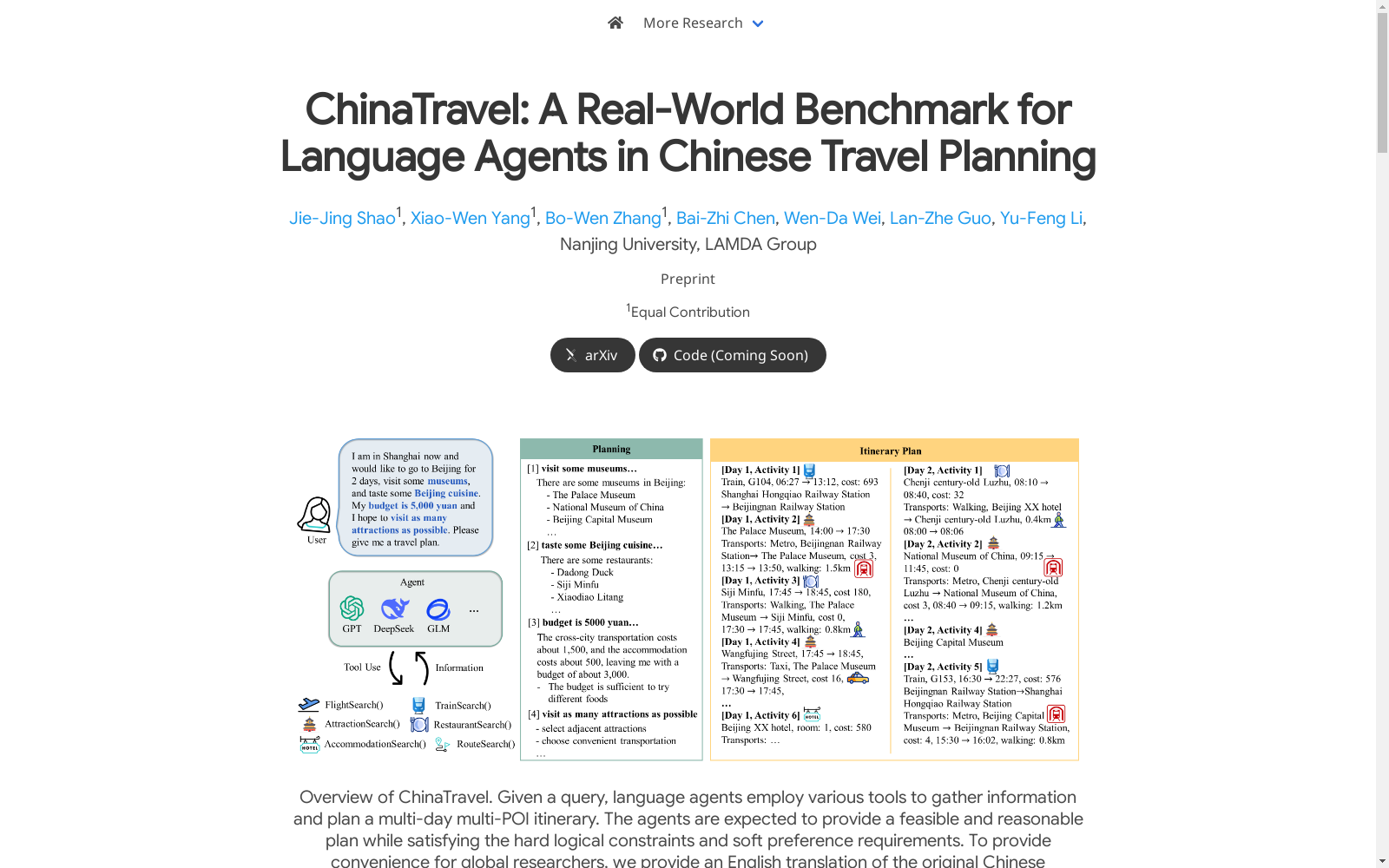ChinaTravel|旅行规划数据集|数据集评估数据集
收藏ChinaTravel: A Real-World Benchmark for Language Agents in Chinese Travel Planning
数据集概述
- 名称: ChinaTravel
- 描述: 一个用于中文旅行规划的语言代理的现实世界基准。
作者
- Jie-Jing Shao<sup>1</sup>
- Xiao-Wen Yang<sup>1</sup>
- Bo-Wen Zhang<sup>1</sup>
- Bai-Zhi Chen
- Wen-Da Wei
- Lan-Zhe Guo
- Yu-Feng Li
机构
- 南京大学 LAMDA 小组
相关链接
- arXiv: https://arxiv.org/abs/2412.13682
- 代码: https://github.com/LAMDASZ-ML/ChinaTravel (即将推出)

- 1ChinaTravel: A Real-World Benchmark for Language Agents in Chinese Travel Planning南京大学 · 2024年
中国劳动力动态调查
“中国劳动力动态调查” (China Labor-force Dynamics Survey,简称 CLDS)是“985”三期“中山大学社会科学特色数据库建设”专项内容,CLDS的目的是通过对中国城乡以村/居为追踪范围的家庭、劳动力个体开展每两年一次的动态追踪调查,系统地监测村/居社区的社会结构和家庭、劳动力个体的变化与相互影响,建立劳动力、家庭和社区三个层次上的追踪数据库,从而为进行实证导向的高质量的理论研究和政策研究提供基础数据。
中国学术调查数据资料库 收录
PDT Dataset
PDT数据集是由山东计算机科学中心(国家超级计算济南中心)和齐鲁工业大学(山东省科学院)联合开发的无人机目标检测数据集,专门用于检测树木病虫害。该数据集包含高分辨率和低分辨率两种版本,共计5775张图像,涵盖了健康和受病虫害影响的松树图像。数据集的创建过程包括实地采集、数据预处理和人工标注,旨在为无人机在农业中的精准喷洒提供高精度的目标检测支持。PDT数据集的应用领域主要集中在农业无人机技术,旨在提高无人机在植物保护中的目标识别精度,解决传统检测模型在实际应用中的不足。
arXiv 收录
QM9
该数据集名为QM9,包含了134,000个分子的信息,可用于生成点云的建模工作,同时也可应用于分子动力学的研究以及点云生成任务中。
arXiv 收录
danaroth/whu_hi
WHU-Hi数据集(武汉无人机载高光谱图像)由武汉大学RSIDEA研究组收集和共享,可作为精确作物分类和高光谱图像分类研究的基准数据集。该数据集包含三个独立的无人机载高光谱数据集:WHU-Hi-LongKou、WHU-Hi-HanChuan和WHU-Hi-HongHu,均在中国湖北省的农业区域采集。这些数据集通过安装在无人机平台上的Headwall Nano-Hyperspec传感器获取,具有高空间分辨率(H2图像)。数据集预处理包括辐射校准和几何校正,使用仪器制造商提供的HyperSpec软件进行处理。每个数据集都包含了详细的采集时间、天气条件、传感器信息、飞行高度、图像尺寸、波段数量和空间分辨率等信息,并提供了不同作物类别的样本数量。
hugging_face 收录
DIOR
“DIOR” 是用于光学遥感图像中对象检测的大规模基准数据集,该数据集由23,463图像和带有水平边界框注释的192,518对象实例组成。
OpenDataLab 收录
